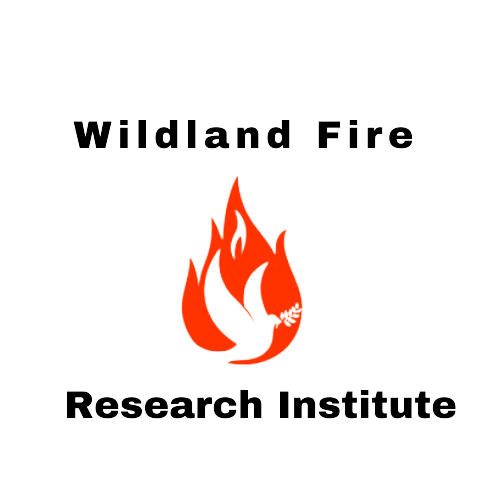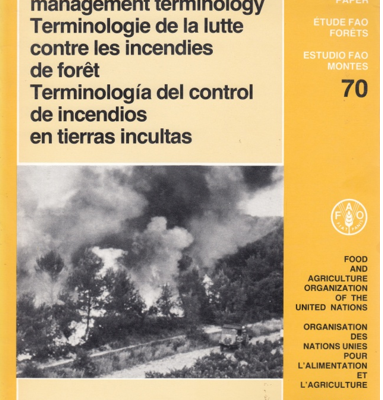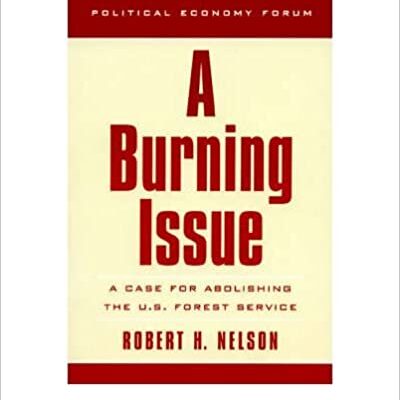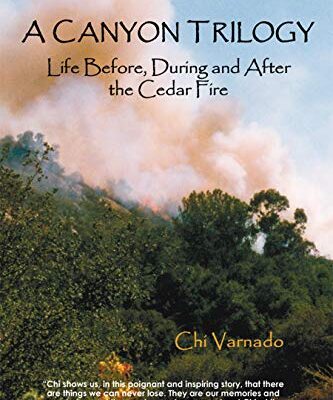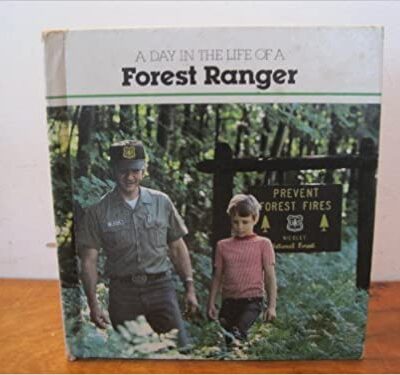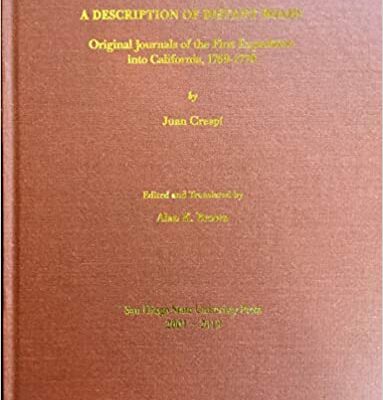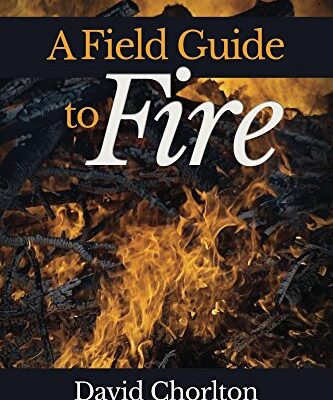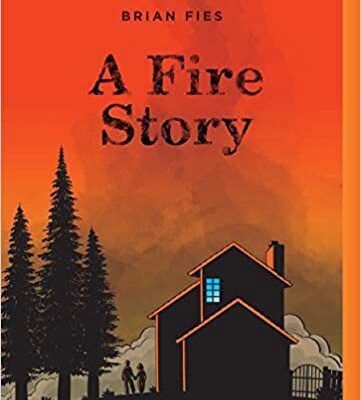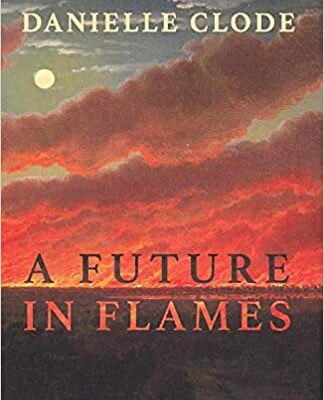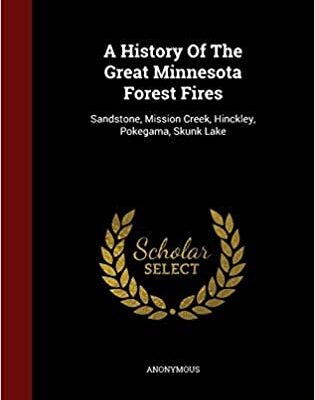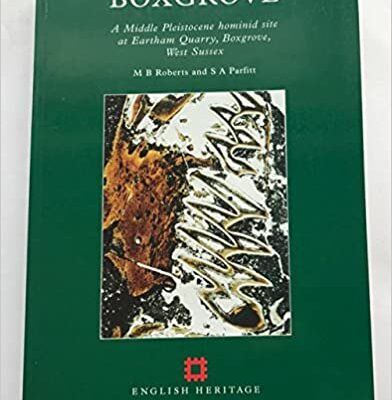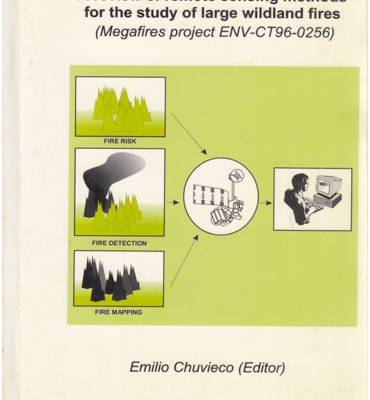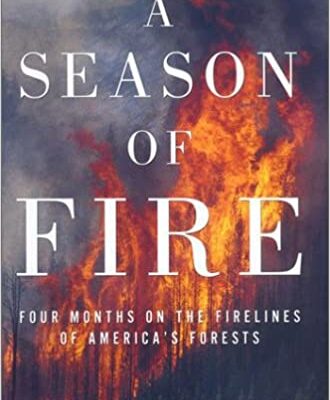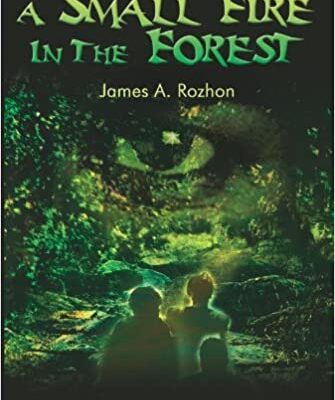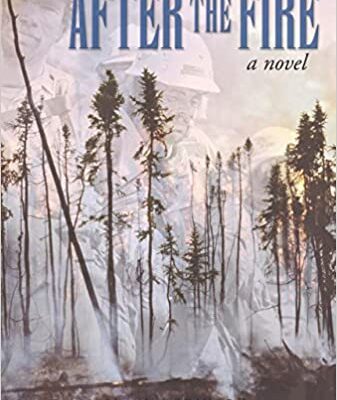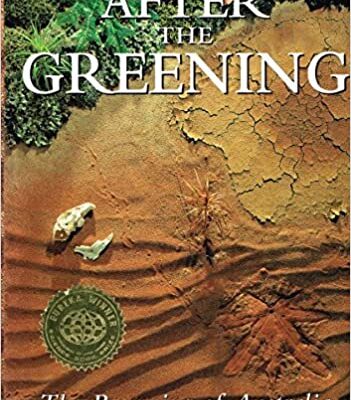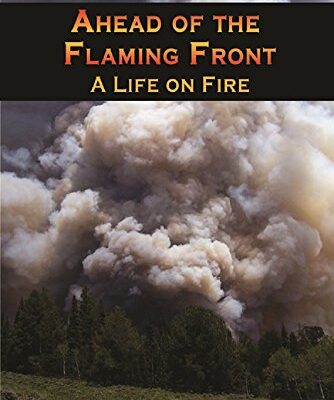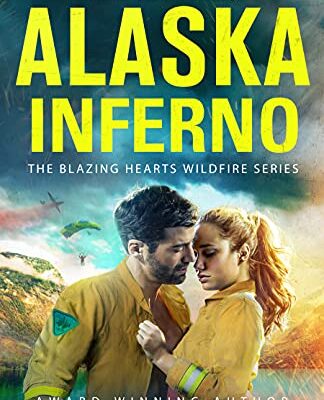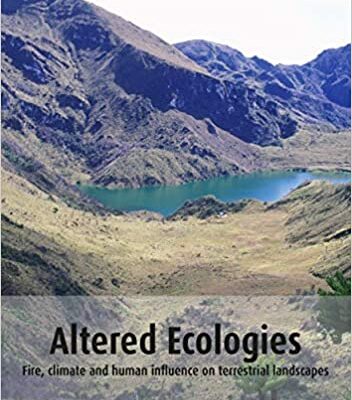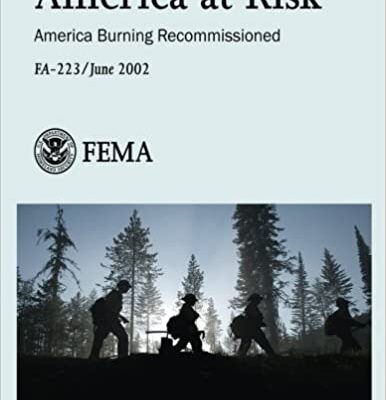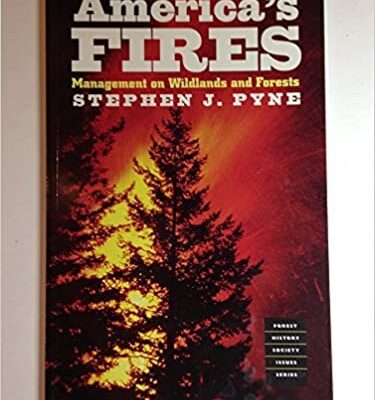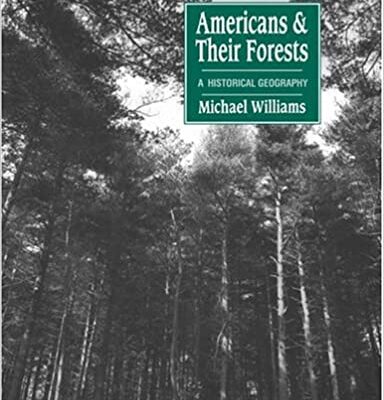Showing 1–40 of 943 results
(The Smoke Jumper)] [Author: Nicholas Evans] published on (July, 2002)
Paperback – July 30, 2002
by Nicholas Evans (Author)
Paperback – July 30, 2002
by Nicholas Evans (Author)
10th international symposium on combustion
Hardcover – January 1, 1965
By : et al. Friedman, Raymond (Author)
Hardcover – January 1, 1965
By : et al. Friedman, Raymond (Author)
1491: New Revelations of the Americas Before Columbus
Paperback – October 10, 2006
by Charles C. Mann (Author)
In this groundbreaking work of science, history, and archaeology, Charles C. Mann radically alters our understanding of the Americas before the arrival of Columbus in 1492. Contrary to what so many Americans learn in school, the pre-Columbian Indians were not sparsely settled in a pristine wilderness; rather, there were huge numbers of Indians who actively molded and influenced the land around them. The astonishing Aztec capital of Tenochtitlan had running water and immaculately clean streets, and was larger than any contemporary European city. Mexican cultures created corn in a specialized breeding process that it has been called man’s first feat of genetic engineering. Indeed, Indians were not living lightly on the land but were landscaping and manipulating their world in ways that we are only now beginning to understand. Challenging and surprising, this a transformative new look at a rich and fascinating world we only thought we knew.
Paperback – October 10, 2006
by Charles C. Mann (Author)
In this groundbreaking work of science, history, and archaeology, Charles C. Mann radically alters our understanding of the Americas before the arrival of Columbus in 1492. Contrary to what so many Americans learn in school, the pre-Columbian Indians were not sparsely settled in a pristine wilderness; rather, there were huge numbers of Indians who actively molded and influenced the land around them. The astonishing Aztec capital of Tenochtitlan had running water and immaculately clean streets, and was larger than any contemporary European city. Mexican cultures created corn in a specialized breeding process that it has been called man’s first feat of genetic engineering. Indeed, Indians were not living lightly on the land but were landscaping and manipulating their world in ways that we are only now beginning to understand. Challenging and surprising, this a transformative new look at a rich and fascinating world we only thought we knew.
A Burning Issue : A Case for Abolishing the U.S. Forest Service
Hardcover – January 1, 2000
by Robert H. Nelson(Author)
Hardcover – January 1, 2000
by Robert H. Nelson(Author)
A Canyon Trilogy
Kindle Edition
by Chi Varnado (Author) Format: Kindle Edition
The October 2003 Southern California wildfires destroyed nearly eight hundred thousand acres, 3,657 homes, and killed twenty-two people. In San Diego County, the Cedar Fire ravaged vast areas becoming the largest fire on the record in state history. Out of this federal disaster Chi Varnado and her family escaped with their lives from their canyon nestled in San Diego's back country. She worked as owner-builder on a log cabin and was among the minority who managed to rebuild in a little over a year. She writes first-hand what life is like in a year of loss: first her mother and then their home in the canyon.
Kindle Edition
by Chi Varnado (Author) Format: Kindle Edition
The October 2003 Southern California wildfires destroyed nearly eight hundred thousand acres, 3,657 homes, and killed twenty-two people. In San Diego County, the Cedar Fire ravaged vast areas becoming the largest fire on the record in state history. Out of this federal disaster Chi Varnado and her family escaped with their lives from their canyon nestled in San Diego's back country. She worked as owner-builder on a log cabin and was among the minority who managed to rebuild in a little over a year. She writes first-hand what life is like in a year of loss: first her mother and then their home in the canyon.
A Day in the Life of a Forest Ranger
Library Binding – June 1, 1979
by David Paige (Author)
Portrays an average working day for a U.S. forest ranger, showing the kinds of work involved, and the job's advantages and disadvantages
Library Binding – June 1, 1979
by David Paige (Author)
Portrays an average working day for a U.S. forest ranger, showing the kinds of work involved, and the job's advantages and disadvantages
A description of distant roads: Original journals of the first expedition into California, 1769-1770
Hardcover – January 1, 2001
by Juan Crespí (Author), Alan K. Brown (Editor)
Text: English, Spanish (translation) Original Language: Spanish
Hardcover – January 1, 2001
by Juan Crespí (Author), Alan K. Brown (Editor)
Text: English, Spanish (translation) Original Language: Spanish
A Field Guide to Fire
Kindle Edition
by David Chorlton (Author), Julie Comnick (Illustrator) Format: Kindle Edition
The Flagstaff Arts Council selected 10 artists and a poet to contribute to an exhibition addressing the role of fire in forest management. In September of 2014 the group visited the North Rim of the Grand Canyon where numerous fire managers, ecologists, and fighters, spoke about the past, present, and potential futures of fire on the Colorado Plateau. David Chorlton was the poet, and A Field Guide to Fire is the collection of poems he wrote. The book also contains charcoal drawings by Julie Comnick, one of the artists. The poems draw on historic as well as contemporary sources to reflect on differing cultural attitudes toward the use of fire in forests, and they address ecology in the age of climate change. The exhibition, Fires of Change, was conceived as a collaboration between science and art. A Field Guide to Fire is a lyrical response, beautifully balanced by visual art.
Kindle Edition
by David Chorlton (Author), Julie Comnick (Illustrator) Format: Kindle Edition
The Flagstaff Arts Council selected 10 artists and a poet to contribute to an exhibition addressing the role of fire in forest management. In September of 2014 the group visited the North Rim of the Grand Canyon where numerous fire managers, ecologists, and fighters, spoke about the past, present, and potential futures of fire on the Colorado Plateau. David Chorlton was the poet, and A Field Guide to Fire is the collection of poems he wrote. The book also contains charcoal drawings by Julie Comnick, one of the artists. The poems draw on historic as well as contemporary sources to reflect on differing cultural attitudes toward the use of fire in forests, and they address ecology in the age of climate change. The exhibition, Fires of Change, was conceived as a collaboration between science and art. A Field Guide to Fire is a lyrical response, beautifully balanced by visual art.
A Fire Story
Paperback – April 20, 2021
by Brian Fies (Author)
From celebrated author and illustrator Brian Fies comes a firsthand account of the Northern California wildfires of 2017—revised and expanded, and now in paperback
Early morning on Monday, October 9, 2017, wildfires burned through Northern California, resulting in 44 fatalities. In addition, 6,200 homes and 8,900 structures were destroyed. Author Brian Fies’s firsthand account of this tragic event is an honest, unflinching depiction of his personal experiences, including losing his house and every possession he and his wife had that didn’t fit into the back of their car. In the days that followed, as the fires continued to burn through the area, Brian hastily pulled together A Fire Story and posted it online—it immediately went viral. He has now expanded his original webcomic to include environmental insight and the fire stories of his neighbors and others in his community. A Fire Story is a candid testimony of the wildfires that left homes destroyed, families broken, and a community determined to rebuild. The updated and expanded Fire Story is an affordably priced paperback of 192 pages, including 32 pages of all-new material, extending the story past the events of the hardcover edition to include updates on the rebuilding, wrestling with insurance, wrangling with contractors, the management of sometimes volatile emotions, and the threats of yet another wildfire.Paperback – April 20, 2021
by Brian Fies (Author)
From celebrated author and illustrator Brian Fies comes a firsthand account of the Northern California wildfires of 2017—revised and expanded, and now in paperback
Early morning on Monday, October 9, 2017, wildfires burned through Northern California, resulting in 44 fatalities. In addition, 6,200 homes and 8,900 structures were destroyed. Author Brian Fies’s firsthand account of this tragic event is an honest, unflinching depiction of his personal experiences, including losing his house and every possession he and his wife had that didn’t fit into the back of their car. In the days that followed, as the fires continued to burn through the area, Brian hastily pulled together A Fire Story and posted it online—it immediately went viral. He has now expanded his original webcomic to include environmental insight and the fire stories of his neighbors and others in his community. A Fire Story is a candid testimony of the wildfires that left homes destroyed, families broken, and a community determined to rebuild. The updated and expanded Fire Story is an affordably priced paperback of 192 pages, including 32 pages of all-new material, extending the story past the events of the hardcover edition to include updates on the rebuilding, wrestling with insurance, wrangling with contractors, the management of sometimes volatile emotions, and the threats of yet another wildfire.A Future in Flames
Paperback – March 19, 2018
Paperback – March 19, 2018
A History of Atmospheric CO2 and Its Effects on Plants, Animals, and Ecosystems
A History Of The Great Minnesota Forest Fires: Sandstone, Mission Creek, Hinckley, Pokegama, Skunk Lake
Hardcover – August 9, 2015
Hardcover – August 9, 2015
A Middle Pleistocene Hominid Site at Eartham Quarry, Boxgrove, West Sussex
Paperback – January 1, 1998
by Simon Parfitt (Editor), Mark Roberts (Editor)
Paperback – January 1, 1998
by Simon Parfitt (Editor), Mark Roberts (Editor)
A Natural Legacy
Paperback – January 1, 1999
by Harry F Recher(Author)
Paperback – January 1, 1999
by Harry F Recher(Author)
A photographic history of vegetation and stream channel changes in san juan county utah
Paperback – January 1, 2000
Paperback – January 1, 2000
A review of remote sensing methods for the study of large wildland fires
A Season of Fire
Hardcover – August 25, 2003
by Douglas Gantenbein (Author)
A journalist goes behind the scenes to explore the lives of smokejumpers and wilderness firefighters, following the harrowing fire season of 2001, during which fires across the west devastated thousands of acres and took the lives of four firefighters, in an account that examines the potentially dangerous situation that exists in the American West. 12,500 first printing.
Hardcover – August 25, 2003
by Douglas Gantenbein (Author)
A journalist goes behind the scenes to explore the lives of smokejumpers and wilderness firefighters, following the harrowing fire season of 2001, during which fires across the west devastated thousands of acres and took the lives of four firefighters, in an account that examines the potentially dangerous situation that exists in the American West. 12,500 first printing.
A Small Fire In The Forest
Paperback – August 28, 2002
by James Rozhon (Author)
Jack Collins is asked by an insurance company to find a man who has disappeared after going to the local race track. His son, Brian, is asked to find a boy who has been kidnapped by his father. His partner, Danny, is asked to find out who is threatening a young woman with death. Three different cases? Yes, but they will converge into one monstrous case that will threaten everyone living in Southern Maine. And also, give Jack a reason to quit the business.
Paperback – August 28, 2002
by James Rozhon (Author)
Jack Collins is asked by an insurance company to find a man who has disappeared after going to the local race track. His son, Brian, is asked to find a boy who has been kidnapped by his father. His partner, Danny, is asked to find out who is threatening a young woman with death. Three different cases? Yes, but they will converge into one monstrous case that will threaten everyone living in Southern Maine. And also, give Jack a reason to quit the business.
A Systems Analysis of the Global Boreal Forest
1st Edition
by Herman H. Shugart(Editor), Rik Leemans(Editor), Gordon B. Bonan(Editor)
The boreal forests of the world, geographically situated to the south of the Arctic and generally north of latitude 50 degrees, are considered to be one of the earth's most significant terrestrial ecosystems in terms of their potential for interaction with other global scale systems, such as climate and anthropologenic activity. This book, developed by an international panel of ecologists, provides a synthesis of the important patterns and processes which occur in boreal forests and reviews the principal mechanisms which control the forests' pattern in space and time. The effects of cold temperatures, soil ice, insects, plant competition, wildfires and climatic change on the boreal forests are discussed as a basis for the development of the first global scale computer model of the dynamical change of a biome, able to project the change of the boreal forest over timescales of decades to millennia, and over the global extent of this forest.
1st Edition
by Herman H. Shugart(Editor), Rik Leemans(Editor), Gordon B. Bonan(Editor)
The boreal forests of the world, geographically situated to the south of the Arctic and generally north of latitude 50 degrees, are considered to be one of the earth's most significant terrestrial ecosystems in terms of their potential for interaction with other global scale systems, such as climate and anthropologenic activity. This book, developed by an international panel of ecologists, provides a synthesis of the important patterns and processes which occur in boreal forests and reviews the principal mechanisms which control the forests' pattern in space and time. The effects of cold temperatures, soil ice, insects, plant competition, wildfires and climatic change on the boreal forests are discussed as a basis for the development of the first global scale computer model of the dynamical change of a biome, able to project the change of the boreal forest over timescales of decades to millennia, and over the global extent of this forest.
A Taste of Smoke
A Web Prototype For Disseminating Forest Fire Data Using Map Apis: Expanding The Spatial Technology
After the Fire: A Novel
Hardcover – July 1, 2003
by Daniel Robinson (Author)
Hardcover – July 1, 2003
by Daniel Robinson (Author)
After the Greening: The Browning of Australia
Hardcover – August 1, 1994
by Mary E. White (Author)
Excellent resource for earth science studies of the southern hemisphere.
Hardcover – August 1, 1994
by Mary E. White (Author)
Excellent resource for earth science studies of the southern hemisphere.
Ahead of the Flaming Front: A Life on Fire
Kindle Edition
by Jerry Mathes II (Author) Format: Kindle Edition
Veteran wildland firefighter Jerry Mathes II takes readers into the heart of wildfires from the forests of Idaho to the deserts of the Mexican border and reveals the camaraderie of men and women bonded by the terror and beauty and hardship of life on the fireline. He makes us live through thunderstorms scattering lightning and hail, endure the high summer heat and shivering nights where bears prowl through wilderness spike camps, and the quiet days of reflection waiting for what may come next. With a poets lyricism he tells of the life and death of friends, negotiating the bureaucracy of the federal fire service, the rivalry of competing agencies, and carrying the weight of absence from his daughters as they grow and the desperate feeling he is failing even as he seems to be succeeding. Readers live alongside him as he grows from a stunned rookie trembling under flames arcing hundreds of feet into the air to a seasoned member of the training cadre, bringing full circle his life on fire by fusing hard won field experience with the classroom to give his students the tools to work and survive in the chaotic fire world so that they can slay the dragon and the dragon does not slay them.
Kindle Edition
by Jerry Mathes II (Author) Format: Kindle Edition
Veteran wildland firefighter Jerry Mathes II takes readers into the heart of wildfires from the forests of Idaho to the deserts of the Mexican border and reveals the camaraderie of men and women bonded by the terror and beauty and hardship of life on the fireline. He makes us live through thunderstorms scattering lightning and hail, endure the high summer heat and shivering nights where bears prowl through wilderness spike camps, and the quiet days of reflection waiting for what may come next. With a poets lyricism he tells of the life and death of friends, negotiating the bureaucracy of the federal fire service, the rivalry of competing agencies, and carrying the weight of absence from his daughters as they grow and the desperate feeling he is failing even as he seems to be succeeding. Readers live alongside him as he grows from a stunned rookie trembling under flames arcing hundreds of feet into the air to a seasoned member of the training cadre, bringing full circle his life on fire by fusing hard won field experience with the classroom to give his students the tools to work and survive in the chaotic fire world so that they can slay the dragon and the dragon does not slay them.
Air Pollution Impacts on Crops & Forests
Air Pollution Processes in Regional Scale
Air Quality and Ecological Impacts: Relating Sources to Effects
- Offers approaches for identifying the emissions components from specific air pollution sources
- Details methods for using pollutant accumulation in plants for ecological effects assessment
- Establishes cause (air quality) and effect (plant responses) relationships under ambient conditions
- Offers approaches for identifying the emissions components from specific air pollution sources
- Details methods for using pollutant accumulation in plants for ecological effects assessment
- Establishes cause (air quality) and effect (plant responses) relationships under ambient conditions
Air Quality Assessment and Management: A Practical Guide
Air Quality Models And Applications
Alaska Inferno: Friends to Lovers Workplace Romance (Blazing Hearts Wildfire Series Book 2)
Kindle Edition
by LoLo Paige (Author) Format: Kindle Edition
Kindle Edition
by LoLo Paige (Author) Format: Kindle Edition
Alaska Spark: A Friends to Lovers Workplace Romance (Blazing Hearts Wildfire Series Book 1)
Kindle Edition
by LoLo Paige (Author) Format: Kindle Edition
Romance, sabotage, and fire can be a deadly mix!
Kindle Edition
by LoLo Paige (Author) Format: Kindle Edition
Romance, sabotage, and fire can be a deadly mix!
All About Lightning Paperback
Abridged, January 1, 1987
by Martin A. Uman (Author)
Does lightning strike twice in the same place? How does a lightning rod work? What is ball lightning? How many thunderstorms are in progress in the world at any one time? Why does lightning zigzag? What is St. Elmo's Fire? These and many more often-asked questions about lightning are answered in this fascinating and informative guide for the layman, presented in an easy-to-follow question-and-answer format. One of nature's most awesome phenomena, lightning has intrigued man since earliest times. In this book, a noted scientist and expert on lightning dispels many misconceptions while offering a wealth of scientific and technical information about the nature of lightning and its effects. You'll discover how Benjamin Franklin proved that lightning was electrical, how to protect yourself from lightning, how to photograph lightning (it's not difficult), the possible relationship between ball lightning and UFOs, what to do for a person struck by lightning, the nature of sheet lightning, ribbon lightning, bead lightning and other variations, and much more. While the overall approach is nontechnical, Dr. U man has incorporated scientific data in the answers in such a way that laymen will find the book a near-painless introduction to current scientific knowledge about lightning. Simple, well-drawn diagrams illuminate the text, along with a selection of spectacular lightning photographs, including a remarkable image of 5 lightning bolts produced by the explosion of the first thermonuclear device. In addition, each chapter contains a list of references cited in the text which suggest further reading for anyone interested in finding out more about earth's dazzling atmospheric fireworks.
Abridged, January 1, 1987
by Martin A. Uman (Author)
Does lightning strike twice in the same place? How does a lightning rod work? What is ball lightning? How many thunderstorms are in progress in the world at any one time? Why does lightning zigzag? What is St. Elmo's Fire? These and many more often-asked questions about lightning are answered in this fascinating and informative guide for the layman, presented in an easy-to-follow question-and-answer format. One of nature's most awesome phenomena, lightning has intrigued man since earliest times. In this book, a noted scientist and expert on lightning dispels many misconceptions while offering a wealth of scientific and technical information about the nature of lightning and its effects. You'll discover how Benjamin Franklin proved that lightning was electrical, how to protect yourself from lightning, how to photograph lightning (it's not difficult), the possible relationship between ball lightning and UFOs, what to do for a person struck by lightning, the nature of sheet lightning, ribbon lightning, bead lightning and other variations, and much more. While the overall approach is nontechnical, Dr. U man has incorporated scientific data in the answers in such a way that laymen will find the book a near-painless introduction to current scientific knowledge about lightning. Simple, well-drawn diagrams illuminate the text, along with a selection of spectacular lightning photographs, including a remarkable image of 5 lightning bolts produced by the explosion of the first thermonuclear device. In addition, each chapter contains a list of references cited in the text which suggest further reading for anyone interested in finding out more about earth's dazzling atmospheric fireworks.
Altered Ecologies: Fire, climate and human influence on terrestrial landscapes
Paperback – April 18, 2011
by S Haberle (Author), J Stevenson (Author), M Prebble (Author)
Like a star chart this volume orientates the reader to the key issues and debates in Pacific and Australasian biogeography, palaeoecology and human ecology. A feature of this collection is the diversity of approaches ranging from interpretation of the biogeographic significance of plant and animal distributional patterns, pollen analysis from peats and lake sediments to discern Quaternary climate change, explanation of the patterns of faunal extinction events, the interplay of fire on landscape evolution, and models of the environmental consequences of human settlement patterns. The diversity of approaches, geographic scope and academic rigor are a fitting tribute to the enormous contributions of Geoff Hope. As made apparent in this volume, Hope pioneered multidisciplinary understanding of the history and impacts of human cultures in the Australia- Pacific region, arguably the globe’s premier model systems for understanding the consequences of humans colonization on ecological systems. The distinguished scholars who have contributed to this volume also demonstrate Hope’s enduring contribution as an inspirational research leader, collaborator and mentor. Terra Australis leave no doubt that history matters, not only for land management, but more importantly, in alerting settler and indigenous societies alike to their past ecological impacts and future environmental trajectories
Paperback – April 18, 2011
by S Haberle (Author), J Stevenson (Author), M Prebble (Author)
Like a star chart this volume orientates the reader to the key issues and debates in Pacific and Australasian biogeography, palaeoecology and human ecology. A feature of this collection is the diversity of approaches ranging from interpretation of the biogeographic significance of plant and animal distributional patterns, pollen analysis from peats and lake sediments to discern Quaternary climate change, explanation of the patterns of faunal extinction events, the interplay of fire on landscape evolution, and models of the environmental consequences of human settlement patterns. The diversity of approaches, geographic scope and academic rigor are a fitting tribute to the enormous contributions of Geoff Hope. As made apparent in this volume, Hope pioneered multidisciplinary understanding of the history and impacts of human cultures in the Australia- Pacific region, arguably the globe’s premier model systems for understanding the consequences of humans colonization on ecological systems. The distinguished scholars who have contributed to this volume also demonstrate Hope’s enduring contribution as an inspirational research leader, collaborator and mentor. Terra Australis leave no doubt that history matters, not only for land management, but more importantly, in alerting settler and indigenous societies alike to their past ecological impacts and future environmental trajectories
Amazonian Dark Earths: Wim Sombroek's Vision
2009th Edition
by William I. Woods (Editor), Wenceslau G. Teixeira (Editor), Johannes Lehmann (Editor), Christoph Steiner (Editor), Antoinette M. G. A. WinklerPrins (Editor), Lilian Rebellato (Editor)
2009th Edition
by William I. Woods (Editor), Wenceslau G. Teixeira (Editor), Johannes Lehmann (Editor), Christoph Steiner (Editor), Antoinette M. G. A. WinklerPrins (Editor), Lilian Rebellato (Editor)
Amazonian Floodplain Forests: Ecophysiology, Biodiversity and Sustainable Management (Ecological Studies, 210)
2011th Edition
by Wolfgang J. Junk (Editor), Maria T. F. Piedade (Editor), Florian Wittmann (Editor), Jochen Schöngart (Editor), Pia Parolin (Editor)
Central Amazonian floodplain forests are an unique and endangered ecosystem. The forests grow in areas that are annually flooded by large rivers during mean periods of up to 8 months and at depths of up to 10 m. Despite this severe stress, these forests consist of over 1,000 species and are by far the most species-rich floodplain forests worldwide. The trees show a broad range of morphological, anatomical, physiological, and phenological adaptations that enable them not only to survive the adverse environmental conditions, but also to produce large amounts of biomass when the nutrient levels in water and soils are sufficiently high. This is the case in the floodplains of white-water rivers, which are used for fisheries, agriculture, and cattle-ranching but which also have a high potential for the production of timber and non-timber products, when adequately managed. Latest research on ecophysiology gives insight how tree species adapt to the oscillating flood-pulse focusing on their photosynthesis, respiration, sap flow, biochemistry, phenology, wood and leave anatomy, root morphology and functioning, fruit chemistry, seed germination, seedling establishment, nitrogen fixation and genetic variability. Based on tree ages, lifetime growth rates and net primary production, new concepts are developed to improve the sustainability of traditional forest managements in the background of an integrated natural resource management. This is the first integrative book on the functioning and ecologically oriented use of floodplain forests in the tropics and sub-tropics.It provides fundamental knowledge for scientist, students, foresters and other professionals on their distribution, evolution and phytogeography. “This book is an excellent testimony to the interdisciplinary collaboration of a group of very dedicated scientists to unravel the functioning of the Amazonian Floodplain forests. They have brought together a highly valuable contribution on the distribution, ecology, primary production, ecophysiology, typology, biodiversity, and human use of these forests offering recommendations for sustainable management and future projects in science and development of these unique wetland ecosystems. It lays a solid scientific foundation for wetland ecologists, foresters, environmentalists, wetland managers, and all those interested in sustainable management in the tropics and subtropics.” Brij Gopal, Executive Vice President International Society for Limnology (SIL).
2011th Edition
by Wolfgang J. Junk (Editor), Maria T. F. Piedade (Editor), Florian Wittmann (Editor), Jochen Schöngart (Editor), Pia Parolin (Editor)
Central Amazonian floodplain forests are an unique and endangered ecosystem. The forests grow in areas that are annually flooded by large rivers during mean periods of up to 8 months and at depths of up to 10 m. Despite this severe stress, these forests consist of over 1,000 species and are by far the most species-rich floodplain forests worldwide. The trees show a broad range of morphological, anatomical, physiological, and phenological adaptations that enable them not only to survive the adverse environmental conditions, but also to produce large amounts of biomass when the nutrient levels in water and soils are sufficiently high. This is the case in the floodplains of white-water rivers, which are used for fisheries, agriculture, and cattle-ranching but which also have a high potential for the production of timber and non-timber products, when adequately managed. Latest research on ecophysiology gives insight how tree species adapt to the oscillating flood-pulse focusing on their photosynthesis, respiration, sap flow, biochemistry, phenology, wood and leave anatomy, root morphology and functioning, fruit chemistry, seed germination, seedling establishment, nitrogen fixation and genetic variability. Based on tree ages, lifetime growth rates and net primary production, new concepts are developed to improve the sustainability of traditional forest managements in the background of an integrated natural resource management. This is the first integrative book on the functioning and ecologically oriented use of floodplain forests in the tropics and sub-tropics.It provides fundamental knowledge for scientist, students, foresters and other professionals on their distribution, evolution and phytogeography. “This book is an excellent testimony to the interdisciplinary collaboration of a group of very dedicated scientists to unravel the functioning of the Amazonian Floodplain forests. They have brought together a highly valuable contribution on the distribution, ecology, primary production, ecophysiology, typology, biodiversity, and human use of these forests offering recommendations for sustainable management and future projects in science and development of these unique wetland ecosystems. It lays a solid scientific foundation for wetland ecologists, foresters, environmentalists, wetland managers, and all those interested in sustainable management in the tropics and subtropics.” Brij Gopal, Executive Vice President International Society for Limnology (SIL).
America at Risk: America Burning Recommissioned
Paperback – October 8, 2013
by U.S. Department of Homeland Security (Author), Federal Emergency Management Agency (Author)
This report, America at Risk, builds on the meetings of America Burning, Recommissioned, and is based on statements, discussions and recommendations that were issued on May 3rd by the Commission as the “Principal Findings and Recommendations”. One hundred years ago, American cities faced a devastating challenge from the threat of urban fires. Whole cities had become the victims of these events. Entire neighborhoods lived with the very real threat that an ignited fire would take everything, including their lives. Today, the threat of fires is still with us. But we have done a lot to address the risk, minimize the incidence and severity of losses, and prevent fires from spreading. Our states and localities have an improving system of codes and standards; most of us are aware of the risks; our communities have everyday heroes who provide the first response to emergency calls; some of our homes and buildings have alarms or sprinkler systems; and our water distribution system for fire suppression stretches further than many imagined in 1900. We have accomplished a lot, but we have much more to do. Our community fire departments and firefighters are at the vanguard of the long-term effort to address our fire risks. Not only are they the first responders to fire and other natural and man-made disasters, but also they have been strong advocates of effective codes and standards; they visited our schools and neighborhoods with educational material on fire risks, and they have put their lives on the line countless times. They will continue to do so. There is ample proof that the word hero is a correct attribute of our Nation’s firefighters. As this report very clearly indicates, the success of America’s fire services over the past 100 years is instructive for the strength and sustainability of America’s communities for the next 100 years as well. Today, we must not only continue and reinvigorate our successes, but also expand them to include the natural and man-made threats that each of our counties, cities, towns and villages face every day – floods, earthquakes, hurricanes, hazardous material spills, highway accidents, acts of terrorism, and so much more. As the Federal Emergency Management Agency’s Project Impact: Building Disaster Resistant Communities has shown, community-based partnerships among local government, public safety services, businesses and residents will provide us the best set of priorities and implementation strategies, as well as the longest lasting commitments with respect to disaster prevention. That is why FEMA and national fire service organizations have formed a Project Impact partnership to support communities’ efforts to become disaster resistant. Project Impact depends on our first responders, our neighborhood fire departments, and without them, our communities would all be more vulnerable to disaster losses.
Paperback – October 8, 2013
by U.S. Department of Homeland Security (Author), Federal Emergency Management Agency (Author)
This report, America at Risk, builds on the meetings of America Burning, Recommissioned, and is based on statements, discussions and recommendations that were issued on May 3rd by the Commission as the “Principal Findings and Recommendations”. One hundred years ago, American cities faced a devastating challenge from the threat of urban fires. Whole cities had become the victims of these events. Entire neighborhoods lived with the very real threat that an ignited fire would take everything, including their lives. Today, the threat of fires is still with us. But we have done a lot to address the risk, minimize the incidence and severity of losses, and prevent fires from spreading. Our states and localities have an improving system of codes and standards; most of us are aware of the risks; our communities have everyday heroes who provide the first response to emergency calls; some of our homes and buildings have alarms or sprinkler systems; and our water distribution system for fire suppression stretches further than many imagined in 1900. We have accomplished a lot, but we have much more to do. Our community fire departments and firefighters are at the vanguard of the long-term effort to address our fire risks. Not only are they the first responders to fire and other natural and man-made disasters, but also they have been strong advocates of effective codes and standards; they visited our schools and neighborhoods with educational material on fire risks, and they have put their lives on the line countless times. They will continue to do so. There is ample proof that the word hero is a correct attribute of our Nation’s firefighters. As this report very clearly indicates, the success of America’s fire services over the past 100 years is instructive for the strength and sustainability of America’s communities for the next 100 years as well. Today, we must not only continue and reinvigorate our successes, but also expand them to include the natural and man-made threats that each of our counties, cities, towns and villages face every day – floods, earthquakes, hurricanes, hazardous material spills, highway accidents, acts of terrorism, and so much more. As the Federal Emergency Management Agency’s Project Impact: Building Disaster Resistant Communities has shown, community-based partnerships among local government, public safety services, businesses and residents will provide us the best set of priorities and implementation strategies, as well as the longest lasting commitments with respect to disaster prevention. That is why FEMA and national fire service organizations have formed a Project Impact partnership to support communities’ efforts to become disaster resistant. Project Impact depends on our first responders, our neighborhood fire departments, and without them, our communities would all be more vulnerable to disaster losses.
America's Fires
Americans and their Forests: A Historical Geography (Studies in Environment and History)
First Paperback Edition
by Michael Williams (Author)
When Europeans first reached the land that would become the United States they were staggered by the breadth and density of the forest they found. The existence of that forest, and the effort either to use or subdue it, have been constant themes in American history, literature, economics, and geography up to the meaning of the forest in American history and culture, he describes and analyzes the clearing and use of the forest from pre-European times to the present, and he traces the subsequent regrowth of the forest since the middle of the twentieth century. Dr Williams begins by exploring the role of the forest in American culture: the symbols, themes, and concepts - for example, pioneer woodsman, lumberjack, wilderness - generated by contact with the vast land of trees. He considers the Indian use of the forest, describing the ways in which native tribes altered it, primarily through fire, to promote a subsistence economy. Early European settlers, he shows, extracted many products from the forest, and also began the extensive clearance of trees that would continue for almost three hundred years. Succeeding chapters, organized by topic and region, cover agricultural and industrial effects upon and uses of the forest. Dr Williams explores the rise (and often fall) of industries based upon forest products: naval stores, timber for building, charcoal and the iron industry, the railroads. Attention is devoted to the forests of the Middle West, the South, and the Pacific Northwest. By the late nineteenth century Americans began to realize that the forest was not boundless and moved to preserve those portions, still extensive, that remained. In the wake of the movement for preservation, Dr Williams describes how the forest began to regrow, especially after 1950, in areas where it had originally been vigorous and healthy, a development that continues today.
First Paperback Edition
by Michael Williams (Author)
When Europeans first reached the land that would become the United States they were staggered by the breadth and density of the forest they found. The existence of that forest, and the effort either to use or subdue it, have been constant themes in American history, literature, economics, and geography up to the meaning of the forest in American history and culture, he describes and analyzes the clearing and use of the forest from pre-European times to the present, and he traces the subsequent regrowth of the forest since the middle of the twentieth century. Dr Williams begins by exploring the role of the forest in American culture: the symbols, themes, and concepts - for example, pioneer woodsman, lumberjack, wilderness - generated by contact with the vast land of trees. He considers the Indian use of the forest, describing the ways in which native tribes altered it, primarily through fire, to promote a subsistence economy. Early European settlers, he shows, extracted many products from the forest, and also began the extensive clearance of trees that would continue for almost three hundred years. Succeeding chapters, organized by topic and region, cover agricultural and industrial effects upon and uses of the forest. Dr Williams explores the rise (and often fall) of industries based upon forest products: naval stores, timber for building, charcoal and the iron industry, the railroads. Attention is devoted to the forests of the Middle West, the South, and the Pacific Northwest. By the late nineteenth century Americans began to realize that the forest was not boundless and moved to preserve those portions, still extensive, that remained. In the wake of the movement for preservation, Dr Williams describes how the forest began to regrow, especially after 1950, in areas where it had originally been vigorous and healthy, a development that continues today.
An Appraisal of Forest and Land Fire Programs in Indonesia
Paperback – Illustrated, April 29, 2013
Paperback – Illustrated, April 29, 2013
